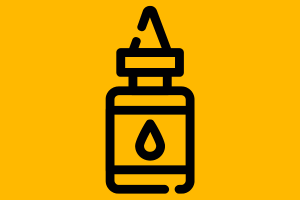Kojic acid is a skin-brightening ingredient.
It reduces pigmentation on the skin and thus brightens our skin. It is an anti-pigmentation ingredient.
It works against pigmentation by:
1. By inhibiting the tyrosinase enzyme
Tyrosinase is an enzyme found in the deeper layers of the skin. It helps produce melanin in the skin.
Melanin, a pigment in the skin, is produced in the deeper layers of the skin. It has two important functions:
When skin gets inflammed, the enzyme tyrosinase gets stimulated. It kicks into a defence mode and helps produce additional melanin. It does this so that melanin can perform its protective function.
Skin gets inflammed when it is attacked by irritants and allergens. These could be anything from acne to pollution to the sun’s UV rays, allergies to minor cuts and bruises, and more.
When skin becomes inflammed, it needs help and protection from further harm, so the tyrosinase enzyme becomes stimulated and overactive. This is because the enzyme is part of the skin’s defence mechanism.
So far, so good.
Here is where the problem starts…
Melanin can protect only to a certain extent. After its maximum protection level has been reached, adding more melanin is of no help. However, the tyrosinase enzyme does not know this limitation. It continues to help produce melanin as long as the skin is inflammed. So, the additional melanin it continues to produce is just excess.
Excess melanin deposits itself in the top layer of the skin. These deposits are much darker than the rest of the skin, as they are concentrated amounts of melanin. This is hyperpigmentation: a section of the skin darker than the rest.
This excess melanin production occurs only in darker-skinned people. Cells’ melanin production capability is much lower in lighter skin tones than in darker skin tones, so the maximum amount of melanin is not reached in lighter skin tones. Hence, the melanin that the enzyme continues to produce is needed. It is usually never excess.
Ingredients like kojic acid and other tyrosinase inhibitors inhibit the activity of the tyrosinase enzyme. They all use their own unique ways to calm the tyrosinase enzyme. In the case of kojic acid, it reduces the stimulation of the enzyme by absorbing copper. Copper is needed by the enzyme to function well. With copper gone, the enzyme’s hyperactivity reduces.
A calmer tyrosinase enzyme means much lower levels of excess melanin or no excess melanin.
2. By being an antioxidant
When skin is inflammed, inflammation produces particles called free radicals. These particles are nasty. They kill good skin cells, age our skin, and cause more inflammation.
Free radicals continue to harm the skin until they are neutralised. Antioxidants are particles or compounds that can neutralise free radicals. Kojic acid has antioxidant properties. It can neutralise these free radicals.
Neutralising free radicals is vital in controlling pigmentation. If free radicals are neutralised, the inflammation they cause is gone. As we know from the above section, inflammation triggers an overproduction of melanin, which leads to pigmentation.
How much kojic acid is needed?
In skincare, kojic acid is effective between 1 and 4% concentrations.

